3 California Summer Road Trips
Hit the road this summer to explore the best of California. We’ve compiled itineraries for three incredible road trips for cruising California’s stunning coastline, touring the majestic redwoods, and discovering the history steeped in the Gold Rush towns of the Sierra Nevada Foothills.
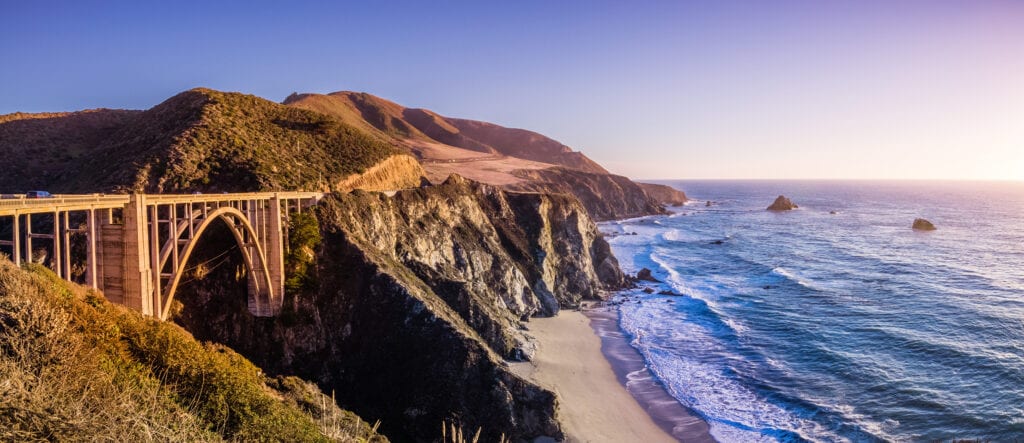
Pacific Coast Highway
The legendary Highway 1 is California’s quintessential road trip. While the full route extends from Southern California’s Dana Point up to Leggett in Mendocino County, a popular stretch runs 434 miles from Los Angeles and San Francisco and includes the newly-reopened section along Big Sur. The route hugs the coast most of the way, serving up dazzling ocean views and iconic California destinations.
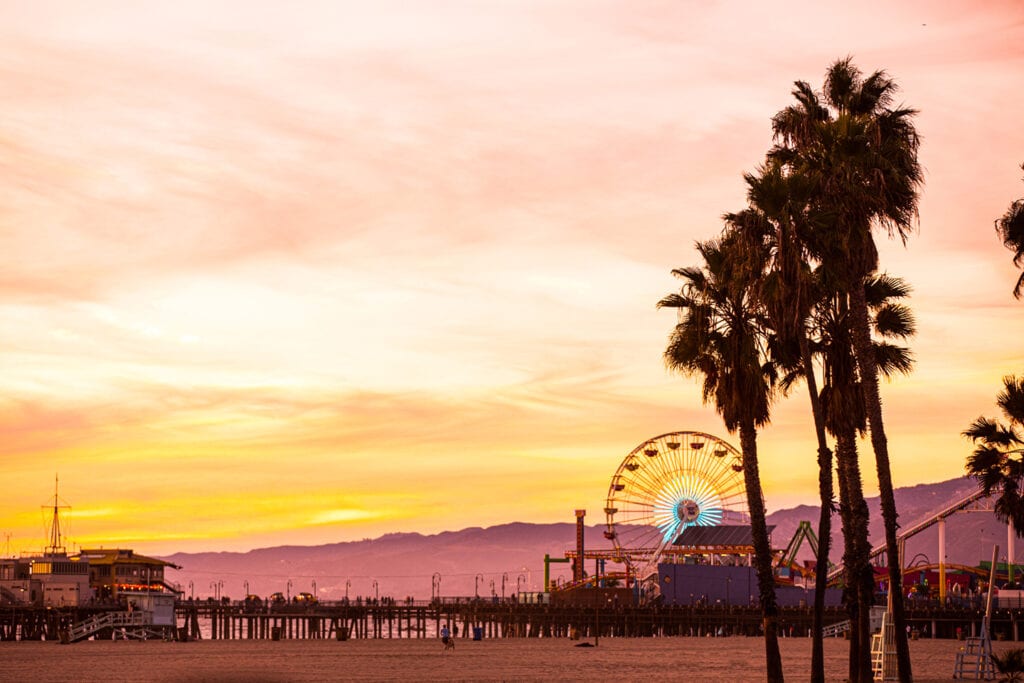
Santa Monica
In Santa Monica, Highway 1 cruises along palm-fringed beaches and serves as the terminus of another popular road trip: Route 66. The sun-kissed beach town is a great jumping-off point for any road-tripper, offering all the glamour of Los Angeles, but with a laid-back vibe and far greater walkability. Park your car and venture out on foot to explore the pedestrian-friendly Third Street Promenade, which is home to a plethora of outdoor cafes, shops, and movie theaters. More great restaurants, boutiques, and chic spas can be found along tree-lined Montana Avenue. At the famous Santa Monica Pier and its overwater amusement park, take a spin on a solar-powered Ferris wheel or a historic carousel.
Where to Stay: One block from the beach, the historic Channel Road Inn is an inviting retreat with 15 beautifully appointed rooms, flowering gardens, a Jacuzzi, and complimentary bicycles for cruising the 30-mile path along the beach.
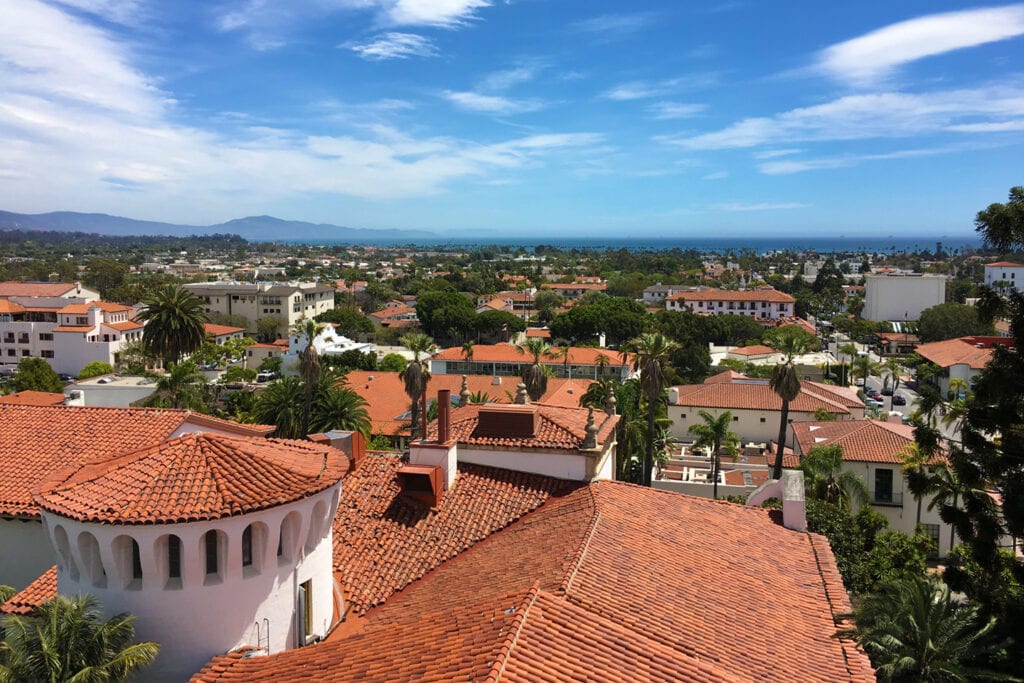
Santa Barbara
Driving north, Highway 1 hugs the coast on its way to Santa Barbara. Known as the “American Riviera,” this dreamy destination enjoys a Mediterranean climate with sunny beaches, Spanish-Colonial Revival architecture, and endless riches of food, wine, culture, and outdoor recreation. Climb the clock tower of the historic Santa Barbara County Courthouse for a bird’s eye view of the palm trees and red tile roofs stretching out to the sea. Then stroll State Street to shop and grab a bite at an outdoor café. Paddle out into calm waters around Stearns’ Wharf in a kayak or a SUP. Afterward, explore the rehabbed warehouses of The Funk Zone, which are now home to urban wine-tasting rooms, distilleries, and galleries. Also, don’t miss a tour of the “Queen” of California’s missions: Old Mission Santa Barbara.
Where to Stay: For boutique hotel options tucked into a beachside neighborhood with classic Spanish-Colonial flair and easy access off Highway 1, check out Inn by the Harbor, Eagle Inn, Harbor House Inn, Casa del Mar Inn, or Villa Rosa Inn.
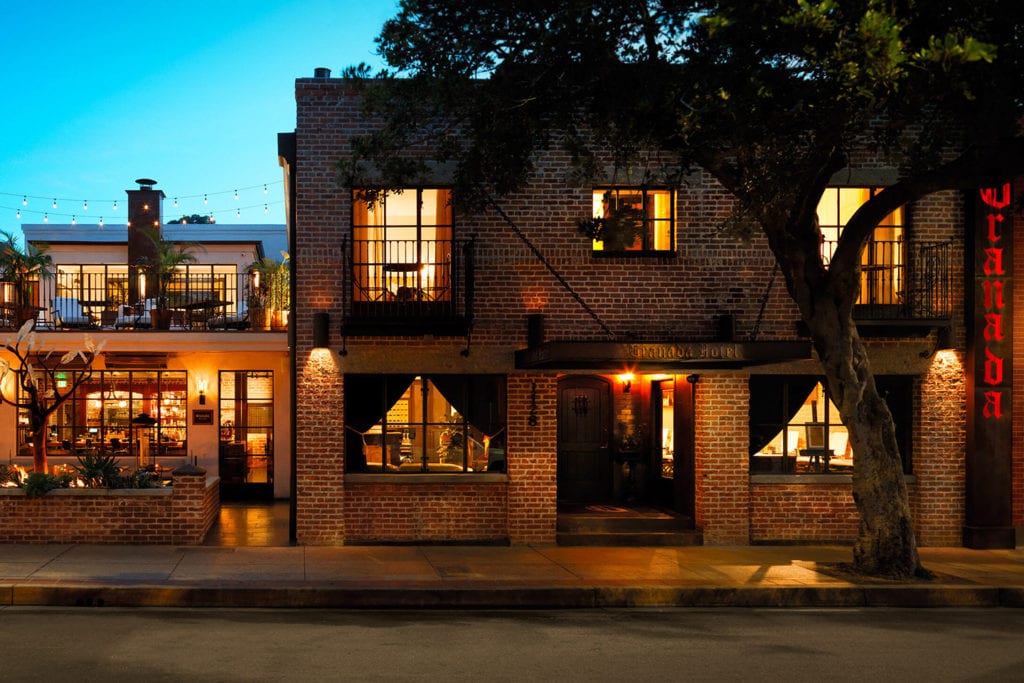
San Luis Obispo
After leaving Santa Barbara, Highway 1 turns inland passing through the vibrant college town of San Luis Obispo. Halfway between Los Angeles and San Francisco, “SLO” (as it’s affectionately known by locals) is an idyllic pit stop combining historic charm with an upscale vibe and a leisurely pace. The city is home to amazing restaurants, craft breweries, and world-class wines. A trolley offers convenient, car-free transport through the heart of downtown, connecting attractions like the 1772 Mission San Luis Obispo de Tolosa, the weekly farmers’ market, and the infamous Bubblegum Alley. You can also trade your wheels for a bike (or even a horse) to climb up into the hills above town to savor the views.
Where to Stay: Nestled in the heart of historic downtown SLO, you’ll find several swanky boutique hotels including Hotel San Luis Obispo, Granada Hotel & Bistro, Hotel Cerro, and Garden Street Inn.
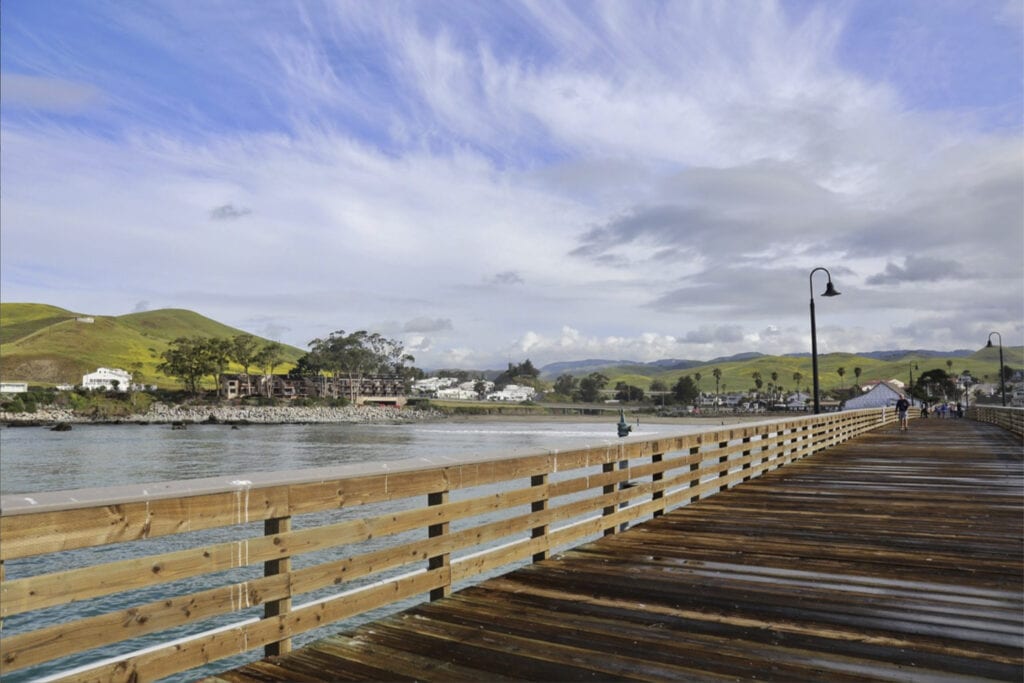
Cayucos
When Highway 1 reconnects with the coast north of San Luis Obispo, it passes through a handful of small beach towns before beginning its dramatic twists and turns along the Big Sur coastline. Among the most charming of the towns is little-known Cayucos. Called the “last of the California beach towns,” this laid-back surf spot is sandwiched between Highway 1 and miles of white sandy beaches. It boasts a charming downtown lined with restaurants, antique shops, surf shops, a historic Old-West saloon, and an addictive cookie shop. A historic fishing pier juts out into Estero Bay providing views that extend from iconic Morro Rock five miles south to the scenic headlands of Estero Bluffs to the north.
Where to Stay: On the Beach Bed & Breakfast offers a stunning location overlooking the pier and Cayucos State Beach. The inn’s rooftop sundeck with lounge seating and hot tub provides a relaxing spot to watch the waves.
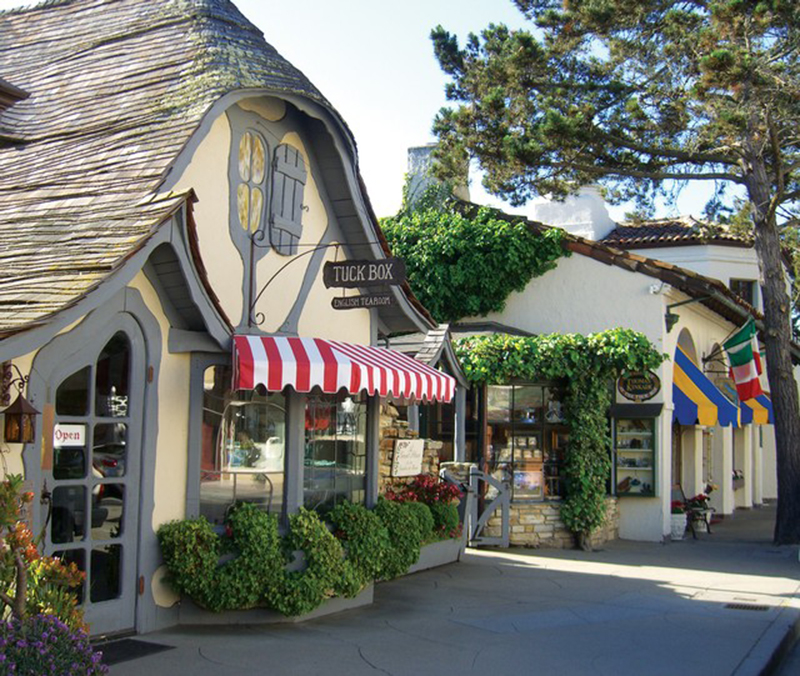
Carmel
Driving north through Big Sur, the road clings to the edge of the Santa Lucia Mountains while the Pacific Ocean crashes below. It’s a remote stretch with tight curves and jaw-dropping beauty. The highway passes through several must-see state parks before re-entering civilization in Carmel. The storybook village of Carmel-by-the-Sea provides a soothing spot to unwind after the drive. The pedestrian-friendly streets are lined with outdoor cafes, wine tasting rooms, art galleries, and one-of-kind boutiques. Just a few blocks away, Carmel Beach beckons visitors with its white sands and gentle waves in a beautiful cove. A scenic path above the beach meanders through windswept Monterey cypress and landscaped gardens to Carmel Point.
Where to Stay: Carmel offers boutique lodging for every taste and budget, including the Bavarian-inspired Hofsas House, the fabulously pet-friendly Carmel Country Inn, the enchanting cottages of Carmel Cottage Inn, and the historic and luxurious L’Auberge Carmel.
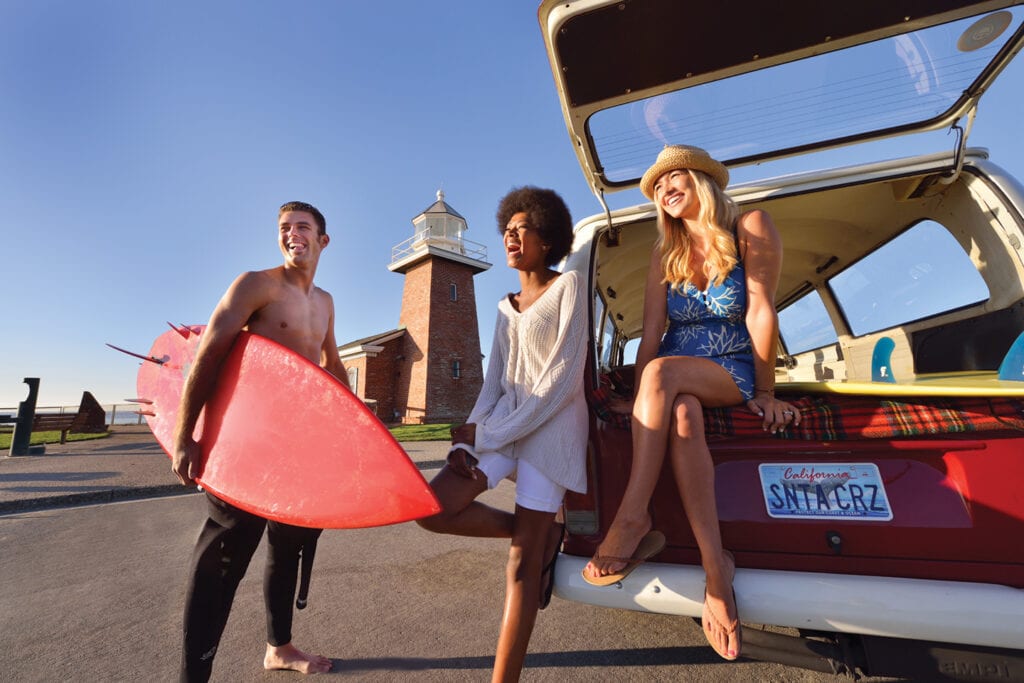
Santa Cruz
From Carmel, Highway 1 curves the length of the Monterey Bay, passing alongside sand dunes, estuaries, and strawberry fields before arriving in Santa Cruz. A classic California beach town, Santa Cruz was the birthplace of surfing on the West Coast. You can watch surfers ride the waves from the cliffs above Steamer Lane, check out surf memorabilia at Santa Cruz Surfing Museum, and or even take a surf lesson at Cowell’s Beach. Another popular attraction is the historic Santa Cruz Beach Boardwalk. The seaside amusement park has been thrilling generations for over 100 years with rides like the Giant Dipper wooden roller coaster and the Looff Carousel. Just blocks from the beach, Downtown Santa Cruz is a vibrant stretch with public art, cool shops, and outdoor cafes.
Where to Stay: Santa Cruz’s historic beach neighborhood offers a multitude of boutique hotels and B&Bs. Beach Street Inn & Suites, Casablanca Inn, Boca del Cielo Inn, Cliff Crest Bed & Breakfast, Rio Vista Inn & Suites, and West Cliff Inn are just some of the options.
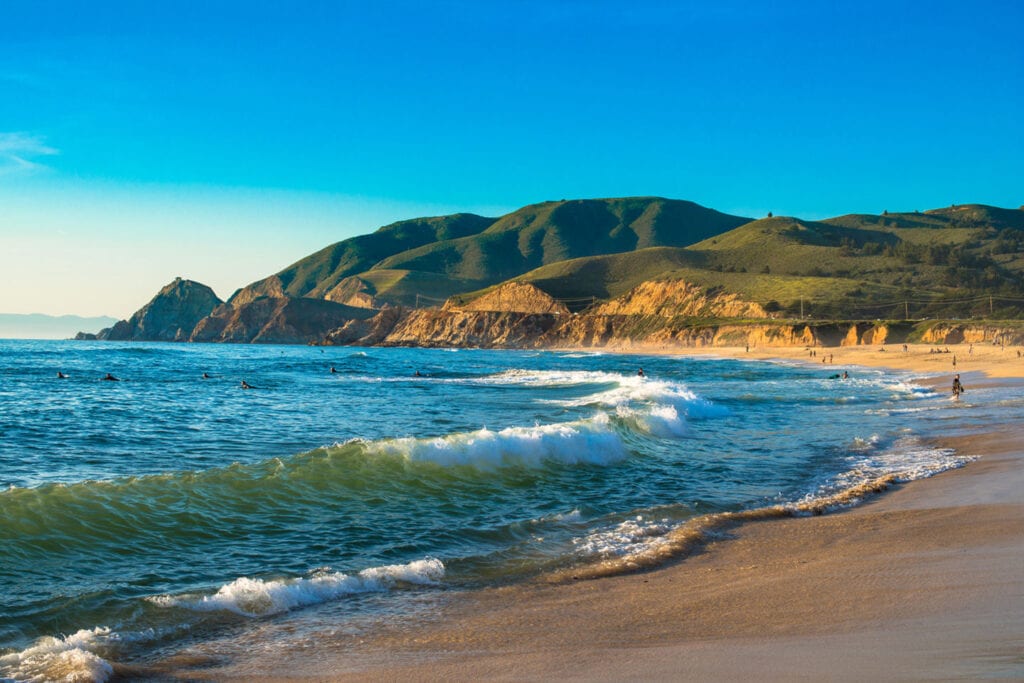
Half Moon Bay
Leaving Santa Cruz, Highway 1 is by turns rugged and bucolic as it winds its way north toward San Francisco. Hugging the seashore, you’ll pass secluded beaches, windswept cliffs, lighthouses, and coastal farms and ranches. The remote feel of the drive is all the more remarkable given its proximity to the city. Half Moon Bay is one of the last small towns before you reach San Francisco. Half Moon Bay’s downtown is lined with charming shops and restaurants. Visitors can play a round of golf against the backdrop of the Pacific Ocean, go horseback riding on the beach, kayak around the harbor, or hike along the coastal bluffs or up into the redwoods.
Where to Stay: The Mill Rose Inn transports guests into a romantic, bygone era amid a profusion of blooming gardens. The Nantucket Whale Inn offers relaxed luxury and chic décor in a beautifully renovated Victorian.
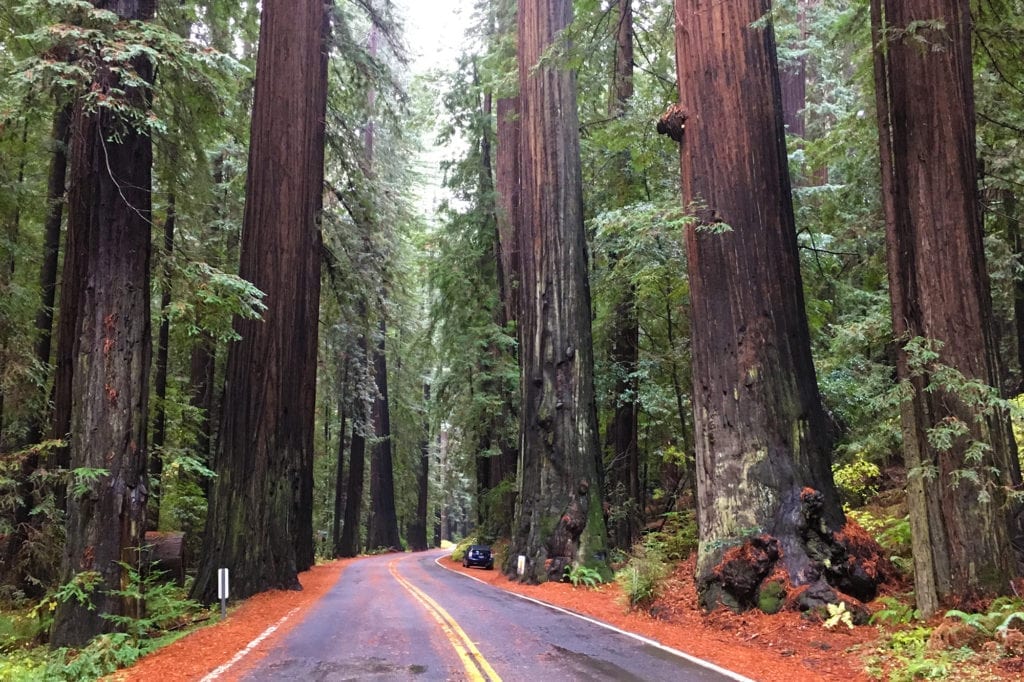
Redwood Highway
One of the most enchanting road trips in the state winds through the towering ancient forests of California’s redwood coast. Four hours north of San Francisco, Route 101 begins its 160-mile trek through a string of redwood state parks and forests that extend just south of the Oregon border. The drive is interspersed by charming Victorian towns, kitschy roadside attractions, and glimpses of the California coast that’s far less traveled.
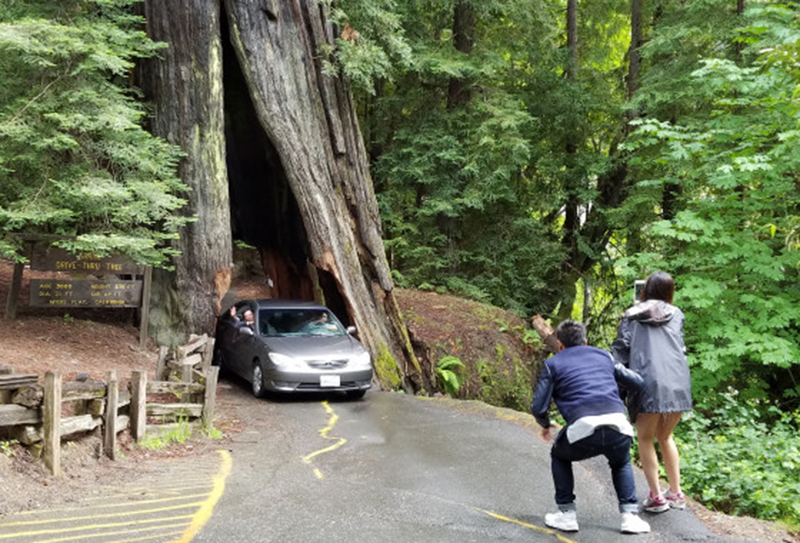
Garberville
In southern Humboldt County near Garberville, Humboldt Redwoods State Park is home to the famed Avenue of the Giants. This awe-inspiring drive parallels Route 101 for 32 miles with old-growth redwoods lining the road like towering sentries. There are plenty of pull-outs along the way for stopping to admire the trees, as well as easy hikes like the Founders Grove Nature Trail which features a fallen 362-foot redwood. Avenue of the Giants also parallels the Eel River, which offers swimming holes for relaxing on the river bank with a picnic or cooling off with a dip in the water. For those who the experience of driving their car through a giant redwood, check out the Shrine Drive-Thru Tree in Myers Flat.
Where to Stay: On the banks of the Eel River, the Benbow Historic Inn is an elegant, Tudor-style hotel with an award-winning restaurant and wine cellar. Its convenient location off Route 101 provides easy access to Humboldt Redwoods State Park.
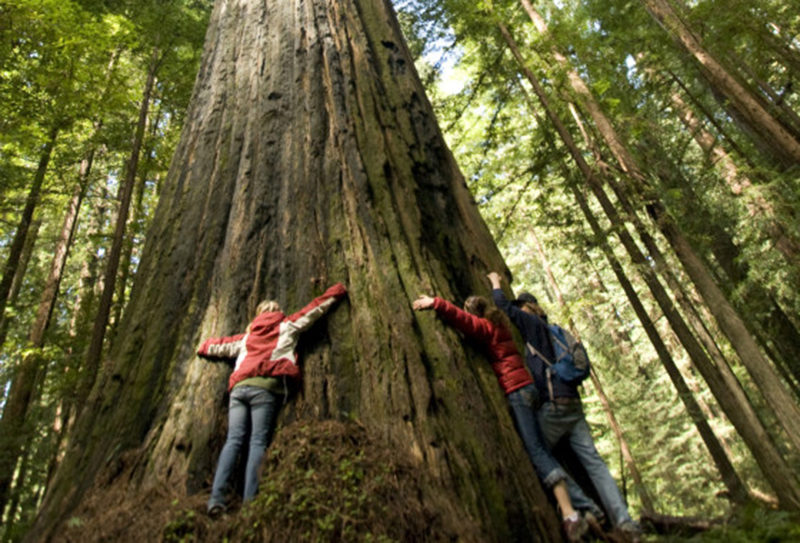
Fortuna
Further north along Route 101, the town of Fortuna provides a central base camp for exploring Humboldt County’s redwood attractions. The town places visitors within a 15-minute drive of the northern entrance to Humboldt Redwoods State Park and the Avenue of the Giants, the historic logging company town of Scotia, the Victorian village of Ferndale, and the Headwaters Forest Reserve. Further afield, Fortuna provides easy access to the three parks comprising the Redwood National and State Parks, six wild and scenic rivers, and miles of remote north coast beaches.
Where to Stay: The Redwood Riverwalk Hotel is an independent hotel with a deep-rooted connection to the region. The hotel features an outdoor courtyard with picnic tables, an indoor pool, and nearby access to a two-mile path along the Eel River.
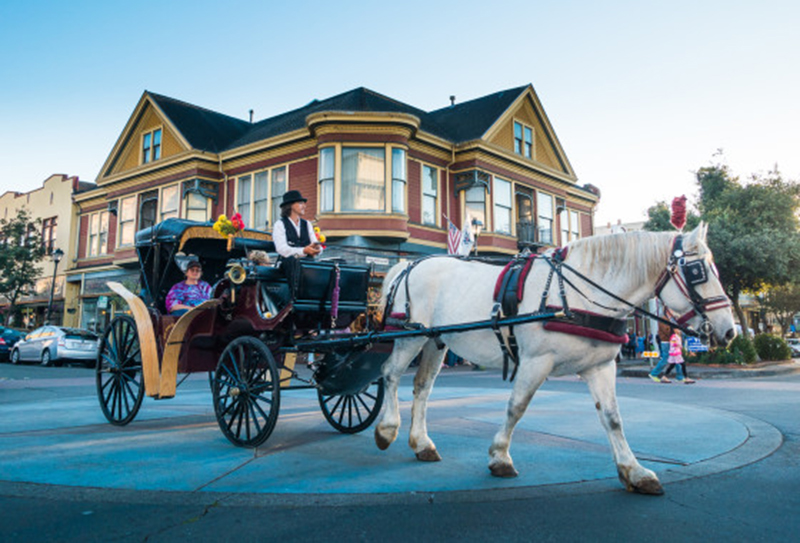
Eureka
The Victorian seaport of Eureka is the largest coastal city between San Francisco and the Oregon border and is a frequent stopover for road trippers exploring the redwood coast. Eureka’s old town district features well-preserved Victorian architecture, unique shops, and great restaurants. The six-mile Eureka Waterfront Trail connects visitors with wildlife and recreation along the shores of Humboldt Bay. North of town, the Redwood National and State Parks are comprised of a string of three massive parks linked by Route 101. The parks are a World Heritage Site and an International Biosphere Reserve protecting nearly half of the world’s old-growth redwoods. Easy hikes within the parks include the Lady Bird Johnson loop trail and the stunning Fern Canyon. Also, keep your eyes peeled for Roosevelt elk along the route.
Where to Stay: Carter House Inns are an enclave of five elegant Victorians within an easy stroll of Eureka’s old town district. The inn unites contemporary good taste with the gracious elegance of a bygone era.
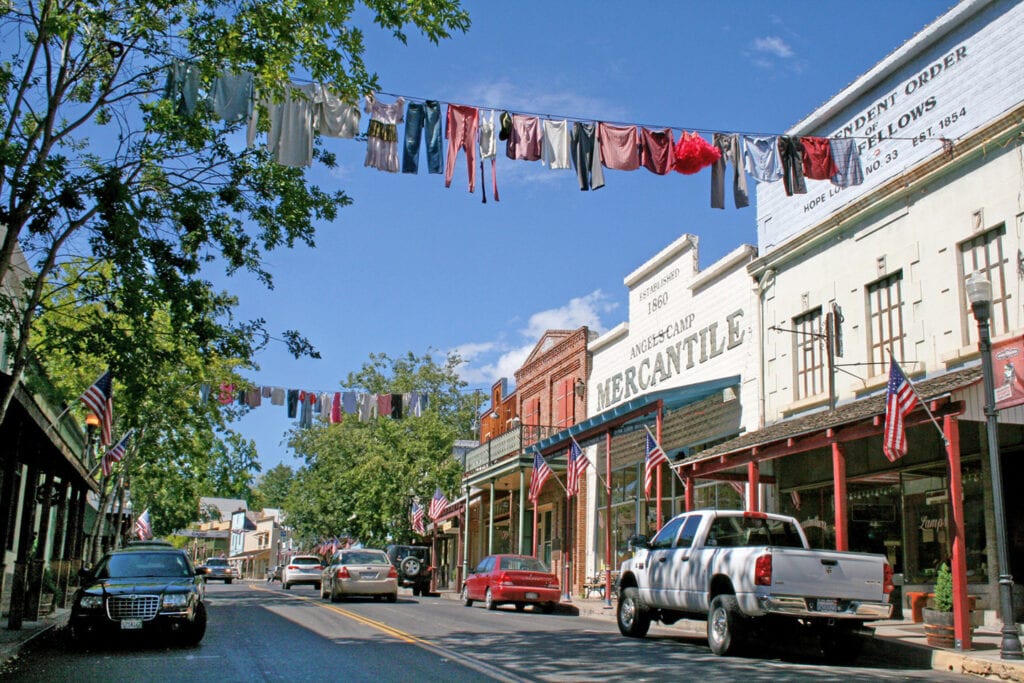
Golden Chain Highway
Travel back in time to California’s Gold Rush with a scenic trip along Highway 49. The highway stretches just over 200 miles from Nevada City to Oakhurst along the Sierra Nevada foothills, connecting a series of mining towns steeped in history and charm. Along the way, the winding route passes bucolic ranches and vineyards and rolling straw-colored hills dotted with oaks.
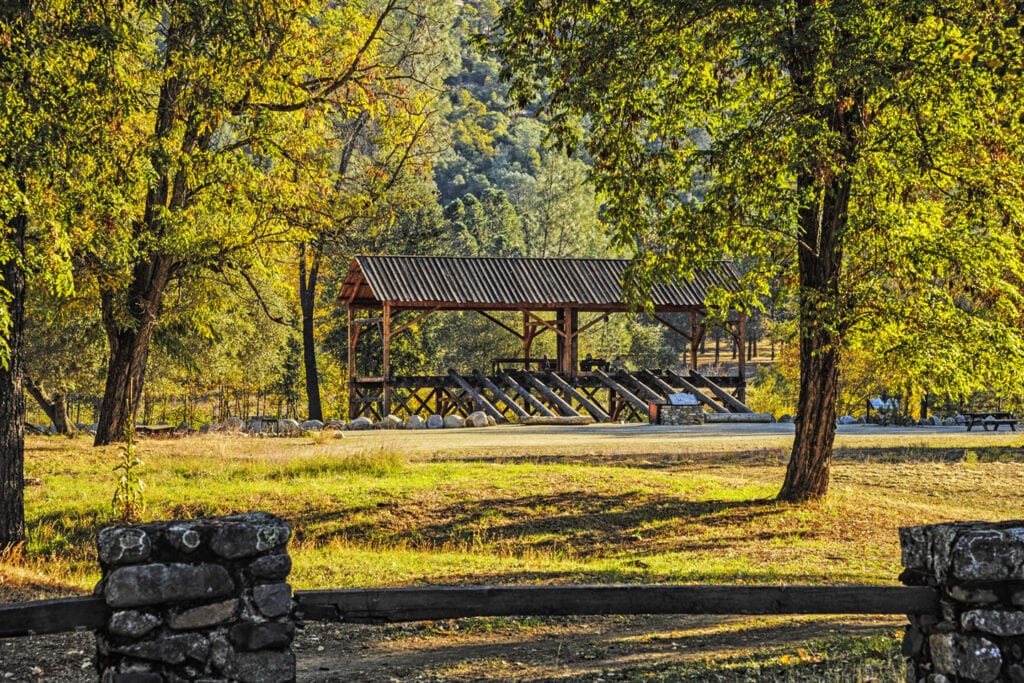
Nevada City to Placerville
At the northern terminus of Highway 49, Nevada City is a picture postcard introduction to California’s gold rush history. The entire downtown district is a national historic landmark. Five miles away in Grass Valley, the Empire Mine State Historic Park is the site of one of the oldest-running gold mines in California. The park contains preserved buildings as well as the entrance to 367 miles of abandoned and flooded mine shafts. An hour south, at the Marshall Gold Discovery State Historic Park in Coloma, you can visit a replica of the original sawmill where James Marshall first discovered flecks of gold along with other historic buildings. Marshall’s discovery in 1848 sparked a mass migration that changed the course of California’s history. Nearby, the Gold Rush town of Placerville is a charming place to stop for dinner at an outdoor café and peruse antique shops and galleries.
Where to stay: The luxuriously appointed Eden Vale Inn is nestled on 10 acres between Coloma and Placerville. Also near Coloma, The Green Toad Bed & Breakfast Inn is an enchanting hideaway on 40 forested acres.
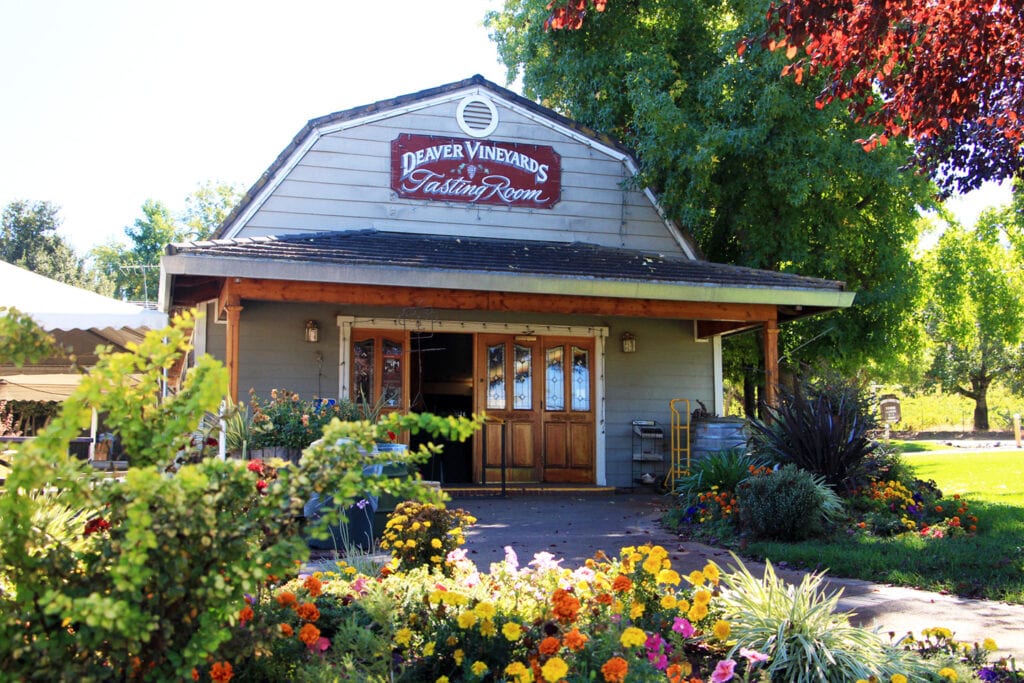
Plymouth
Driving south into Amador County’s Shenandoah Valley, you’ll begin to see more signs for wineries and tasting rooms. The region is experiencing a new kind of gold rush as the number of local wineries has grown from a dozen to over 40 in the last 20 years. Founded during the Gold Rush and set amid the graceful rolling hills, the small town of Plymouth serves as a great base for exploring the region and its wines. It also offers a growing number of upscale eateries. A bit further down the highway in the town of Jackson, the Kennedy Gold Mine offers in-depth tours of the mine’s historic structures. 30 miles away, Angel’s Camp is home to the Calaveras Jumping Frog Jubilee made famous by Mark Twain and a museum dedicated to Gold Rush history.
Where to stay: On Plymouth’s Main Street, Rest, a Boutique Hotel is an elegant and thoughtfully and appointed hotel. To stay in the vineyards, opt for the Tuscan-inspired Grand Reserve Inn or the quaint Amador Harvest Inn.
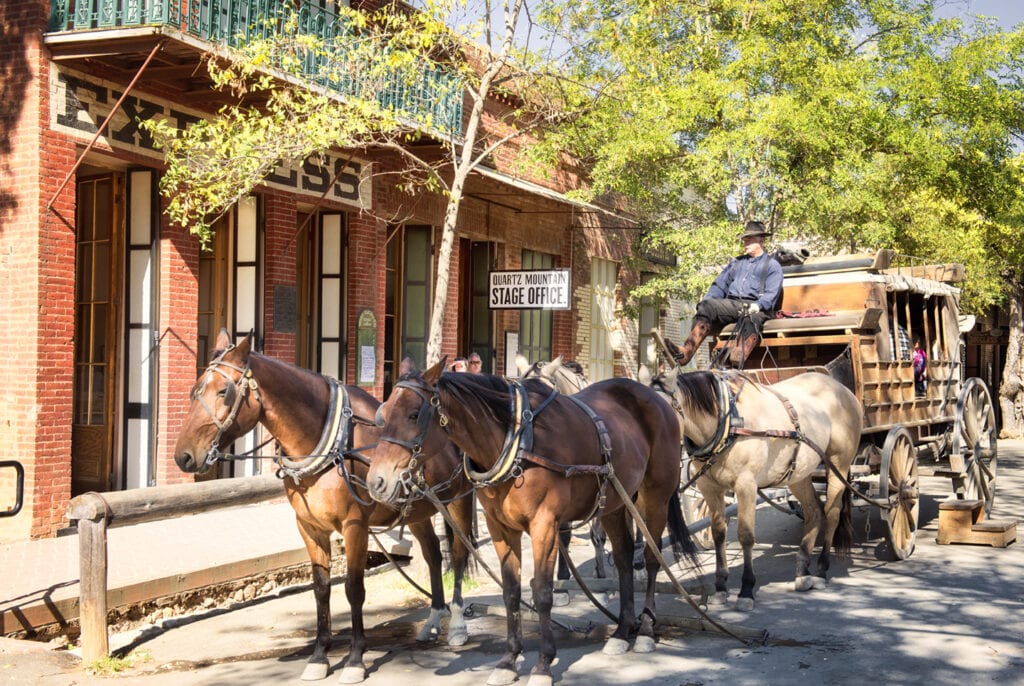
Jamestown
Columbia State Historic Park is the best preserved of the California Gold Rush towns. Visitors can catch a ride in an authentic stagecoach, order cold sarsaparilla in an Old West saloon, or feel the heat of working in a blacksmith’s shop. Costumed docents demonstrate trades, work in period shops, and lead fascinating tours. The free tours depart from the museum at 11 a.m. on weekends and weekdays from mid-June through Labor Day. In nearby Jamestown, visitors can sign up for a gold panning lesson with Gold Prospecting Adventures, which operates a historic mining camp on one of the richest creeks in the Mother Lode.
Where to stay: The 1859 Historic National Hotel has been in continuous operation since it was first built. The hotel features an authentic Gold-Rush era saloon and an antique brass scale with weights if guests want to try to pay for their room in gold nuggets.
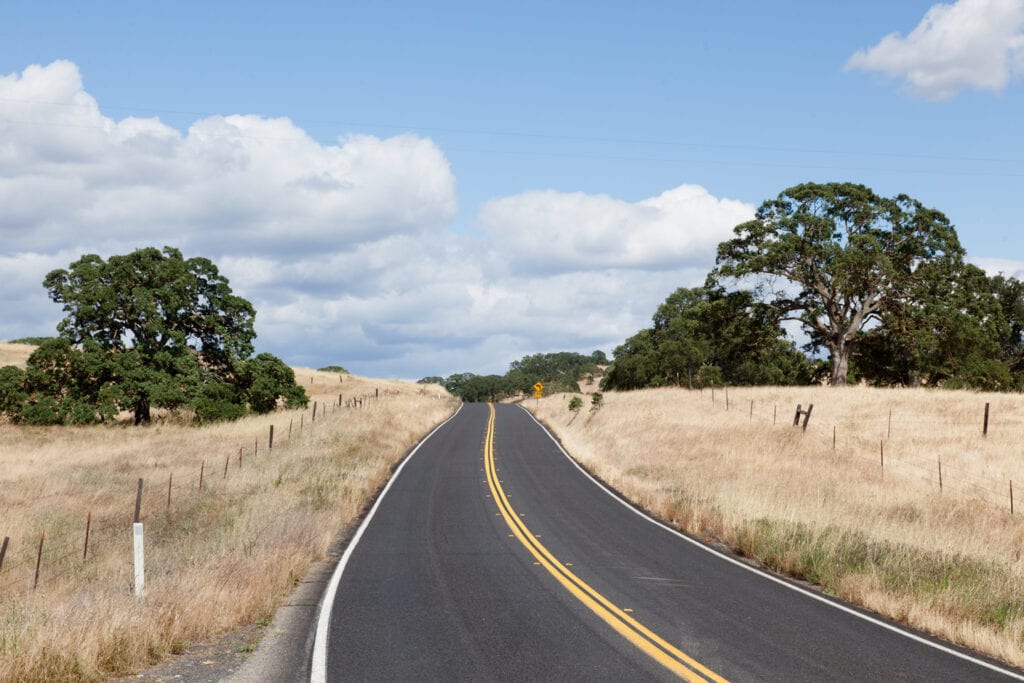
Mariposa to Oakhurst
Following Highway 49 further south takes visitors past several highway turn-offs leading east to Yosemite National Park. Along the last stretch of Highway 49 in Mariposa, the California Mining and Mineral Museum is an impressive jewel. One of the featured attractions is the Fricot “Nugget”, which is a rare specimen of crystallized gold discovered in the American River in 1864. This spectacular 13.8-pound nugget is the largest remaining intact mass of crystalline gold from the 19th Century.
Where to stay: In Ahwahnee near the southern entrance to Yosemite National Park, Apple Blossom Inn is a quaint, country bed and breakfast inn nestled on five and a half acres with an organic apple orchard.